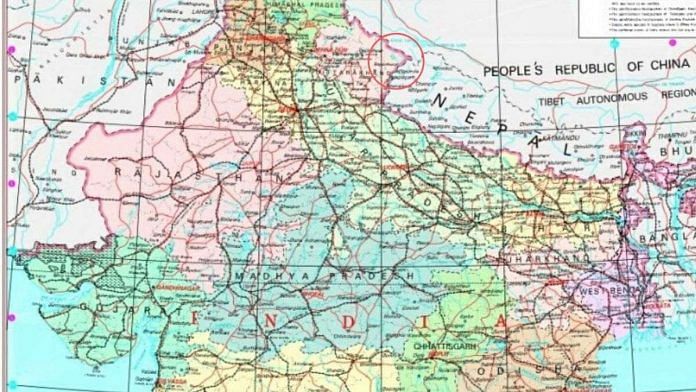New Delhi: After Pakistan, now Nepal is upset with India over the new map that the government released last Saturday, because it depicts the disputed Kalapani area within the state of Uttarakhand.
There has been a spate of protests in Nepal on this issue, and the country’s government issued a strong statement Wednesday, saying India cannot claim this area as its own.
“Nepal government is committed to protecting its international border and any border-related issue relating to the two friendly countries need to be resolved through diplomatic channel on the basis of historical documents and evidence,” Nepal’s foreign ministry said.
Responding to the statement, Raveesh Kumar, spokesperson for India’s Ministry of External Affairs told the press Thursday: “Our map accurately depicts the sovereign territory of India. The new map has in no manner revised our boundary with Nepal. The boundary delineation exercise with Nepal is ongoing under the existing mechanism.”
What is the dispute?
Both India and Nepal claim Kalapani as an integral part of their territories — India as part of Uttarakhand’s Pithoragarh district, and Nepal as part of the Darchula district. The region has been manned by the Indo-Tibetan Border Police since 1962.
The river Mahakali runs through the Kalapani region, with its source being at the heart of the dispute between the countries. But there is no agreed-upon demarcation of the boundary in the region, which stretches up to the border with China.
The Kalapani dispute was discussed during Prime Minister Narendra Modi’s first visit to Nepal in 2014, when the issue was taken up after almost seven years.
Also read: India only cares about national interest. And Nepal has been at the receiving end of it
Chinese influence?
Kumar also said that India reiterates its “commitment to find(ing) a solution through dialogue in the spirit of our close and friendly bilateral relations”, adding that both countries “should guard against vested interests trying to create differences between our two countries”, a possible reference to China.
At the time of the Doklam stand-off, a Chinese government spokesperson had referred to the Kalapani dispute and India’s unsettled disputes over tri-junction areas.
“The Indian side has also many tri-junctions. What if we use the same excuse and enter the Kalapani region between China, India and Nepal or even into the Kashmir region between India and Pakistan,” the spokesperson had said.
Also read: Xi Jinping’s tight embrace of Nepal is bad news for Modi’s Neighbourhood First policy



